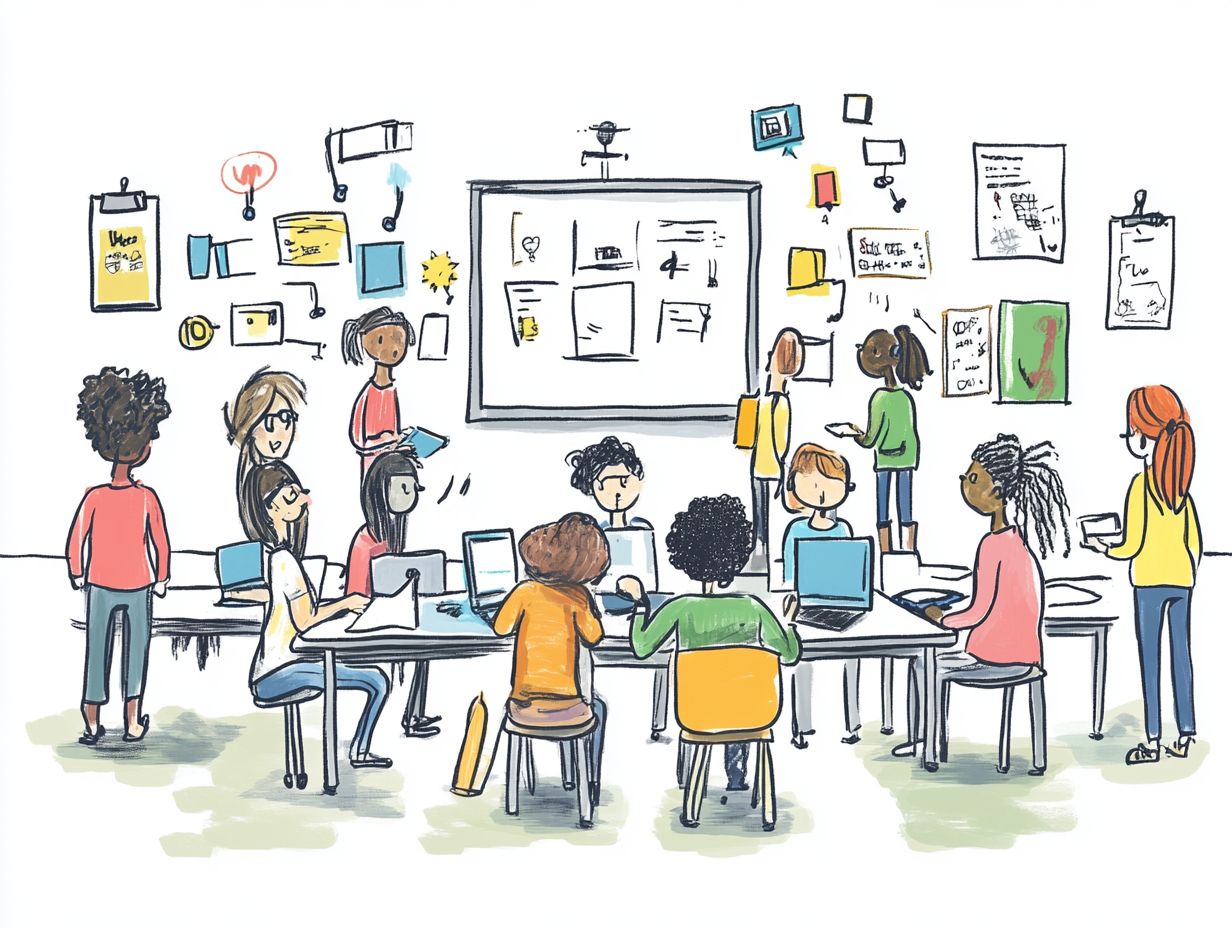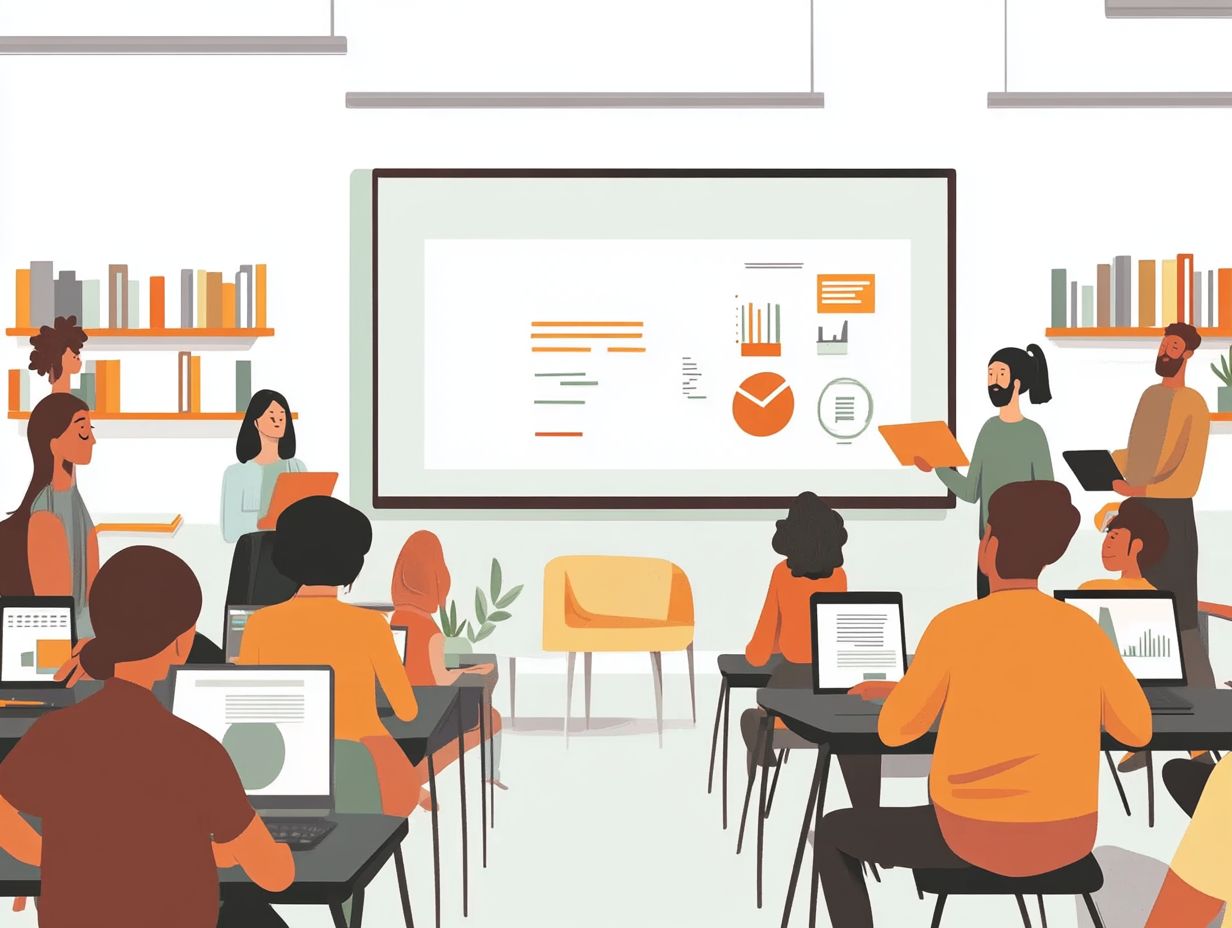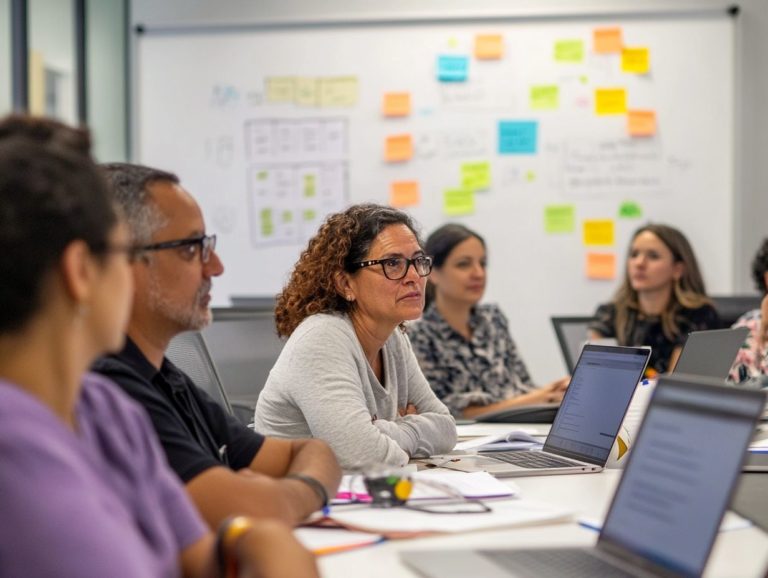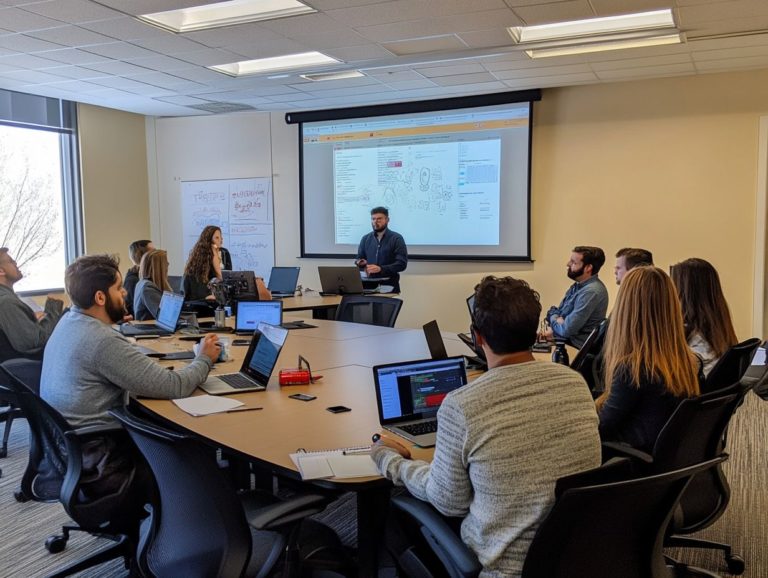understanding different learning styles in training
Every individual absorbs information in their own distinctive way, which highlights the importance of understanding the diverse learning styles that can elevate training and educational experiences.
This article delves into the definitions and significance of learning styles, particularly emphasizing visual, auditory, and kinesthetic modalities. It reveals the unique characteristics and effective strategies tailored for each style, provides insights on identifying your own learning preferences, and discusses how to weave various approaches into your training sessions.
Join us on this journey to unlock everyone s full learning potential today!
Contents
- Key Takeaways:
- Overview of Learning Styles
- Visual Learning Style
- Auditory Learning Style
- Characteristics and Strategies
- Kinesthetic Learning Style
- Identifying Your Learning Style
- Incorporating Different Learning Styles in Training
- Effective Techniques and Activities
- Frequently Asked Questions
- What are the different learning styles in training?
- What is a visual learner?
- What is an auditory learner?
- What is a hands-on learner?
- How can understanding different learning styles benefit training?
- Can individuals have a combination of learning styles?
Key Takeaways:

- Understanding different learning styles is crucial in creating effective training programs.
- Visual, auditory, and kinesthetic are the main learning styles that individuals possess.
- To maximize learning, trainers should incorporate a variety of techniques that cater to all learning styles.
Overview of Learning Styles
Learning styles are essential in shaping how you absorb, process, and retain information. They greatly impact the effectiveness of employee training programs.
By understanding these diverse preferences visual, auditory, reading, kinesthetic, logical, social, and solitary you can enhance your employee development strategies. This fosters an inclusive workplace where every learner flourishes.
The VARK model, which categorizes learning styles into Visual, Auditory, Reading/Writing, and Kinesthetic, offers a valuable framework. It enables you to tailor your training approaches to meet the unique needs of all employees.
Definition and Importance
Learning styles refer to the various ways you prefer to absorb and process information. Grasping these styles is crucial for implementing effective training strategies in the workplace.
Acknowledging that employees may differ significantly in how they take in knowledge allows you to customize your training programs. Ultimately, this enhances learning outcomes.
If you re a visual learner, you likely thrive with diagrams and charts. Auditory learners may excel in discussions and podcasts. Kinesthetic learners do best when they can engage in physical activities.
Adapting training to these styles enhances effectiveness and boosts employee retention, as individuals feel recognized and understood.
When training aligns with personal learning preferences, productivity naturally increases. This fosters a more skilled and motivated workforce.
Visual Learning Style
Visual learners excel when information is conveyed through images, charts, and diagrams. This approach proves particularly effective in settings that embrace diverse teaching methods and training resources, enhancing the overall learning experience.
Characteristics and Strategies
Visual learners often possess a heightened spatial awareness. They tend to thrive when engaging with materials that incorporate visual aids, leading to enhanced understanding and retention of information.
You likely find that concepts are more easily grasped when presented through charts, diagrams, or color-coded notes.
To effectively cater to your learning style, educators and trainers can weave visual elements into their sessions. Employing tools like slideshows with graphs and infographics can break down complex data into digestible pieces.
Videos that illustrate concepts through real-world examples can truly capture your attention and promote a deeper understanding.
Participating in engaging visual activities, such as mind mapping or interactive presentations, can further encourage involvement and solidify knowledge retention. This allows you to absorb information in a manner that aligns with your cognitive strengths.
Auditory Learning Style

As an auditory learner, you absorb information most effectively through listening. This underscores the necessity of integrating well-crafted feedback methods and auditory materials into your online training programs.
By prioritizing these elements, you can enhance your learning experience and optimize your understanding of the material.
Characteristics and Strategies
Aural learners thrive in environments filled with discussions, lectures, and audio materials, shaping the instructional methods used in training modules.
These individuals excel when engaging with content through auditory means. They favor listening over reading or hands-on activities. To cater to their learning style, incorporate group discussions and interactive lectures that promote verbal exchange.
Resources like podcasts are powerful tools that cover a wide range of topics and deliver insights from experts, making them a perfect fit for auditory learners.
Audio seminars and webinars provide convenient platforms for these learners to absorb knowledge while multitasking, allowing them to integrate new information seamlessly into their lives.
Kinesthetic Learning Style
As a kinesthetic learner, you thrive on hands-on training and interactive experiences. It s crucial to integrate group activities and practical exercises into employee training programs.
These dynamic approaches enhance your learning experience and foster collaboration among peers.
Characteristics and Strategies
Kinesthetic learners often find their engagement peaks when diving into physical activities. This highlights the vital need for a learning environment that enhances training effectiveness.
They flourish when allowed to touch, manipulate, and experiment with their surroundings, solidifying concepts through hands-on experiences. To pave the way for success, educators should weave in techniques like role-playing and simulations.
This active involvement boosts comprehension and reinforces retention of information. Offering opportunities for movement such as gestures or using building blocks can further captivate kinesthetic learners.
By crafting a dynamic space that promotes experimentation and interaction, trainers can cater to their distinctive learning styles, fostering a more effective educational experience.
Identifying Your Learning Style
Discovering your learning style opens the door to personalized training that resonates with your preferences.
Doing so significantly enhances training effectiveness in the workplace, ensuring your growth is both meaningful and impactful.
Self-Assessment and Tips

Self-assessment tools empower you to uncover your unique learning preferences, setting the stage for a training experience that meets your needs.
Evaluate your learning styles be it visual, auditory, or kinesthetic to pinpoint the methods that resonate most with you. This insight accelerates your personal growth and significantly influences the development of effective employee training programs.
Try out different learning techniques and seek feedback to refine your strategies, achieving optimal results in both your personal and professional life.
Incorporating Different Learning Styles in Training
Incorporating various learning styles into your training is essential for crafting effective techniques that engage a diverse array of learners.
This approach enriches the learning experience and caters to the unique preferences of each individual.
Explore self-assessment tools to identify your learning preferences!
Effective Techniques and Activities
Effective training techniques blend collaborative tasks with individualized learning activities. This ensures that every learning style is catered to in your employee training programs.
This approach engages visual, auditory, and hands-on learners. It allows them to absorb information in ways that truly resonate.
For example, incorporating hands-on workshops encourages active participation and fosters teamwork. Interactive discussions stimulate critical thinking and enhance auditory processing, making the experience dynamic and engaging.
Utilizing digital platforms for group projects enables remote collaboration. Employees can connect and share insights regardless of their physical location.
These group activities facilitate knowledge sharing and cultivate a sense of community, enriching the learning experience for everyone involved.
Frequently Asked Questions
What are the different learning styles in training?
The different learning styles in training refer to the ways individuals acquire, process, and retain information. The three most commonly recognized styles are visual, auditory, and hands-on.
What is a visual learner?

A visual learner is someone who learns best through visual aids such as charts, diagrams, and videos. They find it easier to remember things when they can see them.
What is an auditory learner?
An auditory learner is someone who learns best through listening and speaking. They prefer to hear information explained rather than reading or seeing it.
What is a hands-on learner?
A hands-on learner is someone who learns best through practical experiences and physical activities. They prefer using their body and sense of touch to understand and remember information.
How can understanding different learning styles benefit training?
Understanding different learning styles benefits training by allowing trainers to tailor their methods and materials to the specific needs and preferences of their trainees. This leads to exciting, effective learning experiences!
Can individuals have a combination of learning styles?
Yes, individuals can have a combination of learning styles. While many people have a dominant style, they may also use elements from other styles to aid in their learning. It’s essential for trainers to recognize and accommodate these variations to facilitate successful training.






